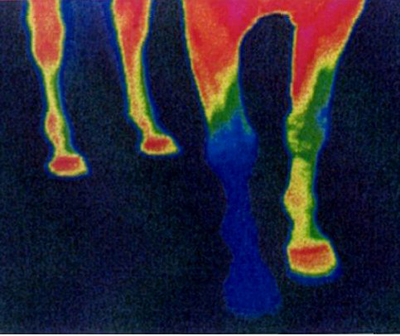This post is dedicated to a friend after she was advised to withhold her horses breakfast before transporting them to move to a new facility. It would have been about 15 hours after feeding dinner before they loaded.
After years of research (creditable places) and talking to vets etc. I have learned a lot. It surprises me still when I hear people who care for horses with wrong or bad information. Here are some of the things that people swear by or “have always done it this way” that is either not true or there is no data to back it up.
- Diatomaceous earth (food grade) is a great natural horse de-wormer– As fantastic as a natural non-chemical de-wormer sounds, there isn’t any that has proven to be effective although I read all over the internet to use it as a de-wormer. I have heard people say they feed it to their horses and it works. Really? Have you done a fecal egg count? Because that is the only way to tell. Diatomaceous earth (DE) is a naturally occurring soft, talc-like powder consisting of the fossilized remains of diatoms, single-celled phytoplankton with hard cell walls made of silica. According to the National Pesticide Information Center “Diatomaceous earth causes insects to dry out and die by absorbing the oils and fats from the cuticle of the insect’s exoskeleton. Its sharp edges are abrasive, speeding up the process. It remains effective as long as it is kept dry and undisturbed”. Hmm, kept dry and undisturbed.
A- It is neither dry or undisturbed when ingested and traveling through the G.I. tract.
B– Some worms such as large and small strongyles go into the intestinal wall, liver, etc. so DE traveling through the G.I tract wouldn’t even make contact with them.
C– I have asked several vets and one replied “I have no studies to offer, just my own observations. I’ve challenged owners that use DE to the “fecal egg count challenge” We run a fecal test on your DE treated horse. If it comes back negative, I pay for the fecal and will give using DE some thought. If it comes back positive, you buy the appropriate dewormer from me. So far, I’ve never paid for a fecal.” Others have said they have never seen a low count on a horse treated with DE.
************ - Over de-worming– I knew a trainer who gave all her horses a tube of Ivermectin every month no matter what! Wow, can you say chemical resistant super worms! I still hear people de-worming every two months. Period. This is a subject where more is NOT better. De-worming should ideally be done based on fecal egg counts of each horse and targeted that way. At the very least it should be based on geographic location, weather, density of horses, age of horses, exposure of those horses to outside untreated horses (for example, performance horses on the road), management practices (pasture rotation, manure removal, etc.) There have been no new classes of de-wormer since the early 1980’s. There are only 3 classes of de-wormers that are available for horses:
a. Benzimidazoles – Fenbendazole (Panacur) and Oxybendazole
(Anthelcide)
b. Macrocyclic lactones – Ivermectin and Moxidectin (Quest)
c. Pyrimidines – Pyrantel (Strongid)
If fecal egg count tests are done, then you can determine which horses need which class of anthelmintic. Then two weeks after de-worming check again to see if it is effective.
************ - Sand colic is not a real thing– I spent a whole night at my vets facility in the private waiting room with a t.v. monitor showing what is going on in the operating room. I had never heard sand in my BLM gelding until a few weeks before he almost died from sand impaction. $7,950 later my horse was sand free and I have kept him sand free since. All my horses get the recommended dose of psyllium 7 consecutive days a month. If I do hear sand in anyone they get at least 30 days of a double dose or until I don’t hear sand anymore. Living in the desert it is easy for them to ingest sand. It is all over. Some people do a test by putting a few pieces of fresh manure in a plastic bag with water and breaking it up, letting it settle and looking for sand in the bottom of the bag. That only tells you if sand is being ingested and coming out. A horse can ingest sand and not have it come out at all or only a little bit come out. That test is not effective in telling you if there is sand in their gut. You have to listen with a stethoscope. Some horses ingest sand simply by eating off the ground. Another way that horses ingest sand is by eating something off the ground that sand has stuck to such as manure or half eaten pellets. It could even be mixed in their hay. I have seen bales of hay have huge dirt clods in them as well as ones that just seem to have dirt mixed in with them. If a horse eats them I don’t think it matters if they live in a stall lined with stall mats and never come in contact with dirt. I have also witnessed horses outright licking the dirt which is natural but not good in places with sand. A BLM mare that just came onto our farm is full of sand. Her previous owner said she doesn’t have any issues with sand at her place. Hmmm.
************ - Warm bran mash is a great laxative, clears out sand, prevents colic, and keeps a horse warm– A warm bran mash might make humans feel warm and good giving it to our horse but it does not warm a horse up. The digestion of forage does. It may seem like it is a laxative because it can make the stools a little loose but that is not because it is working as a laxative. Any time we change a horses diet suddenly the bacteria in the hindgut are affected. That’s why we introduce new foods gradually, over a period of weeks. Cornell University has done studies on this. There have been no studies or tests that show it to be effective in clearing sand either.
************ - Hauling or working horses on an empty stomach–
Unlike humans who produce stomach acids when we eat, equines produce stomach acid all the time, 24 hours a day, continuously, always! I doesn’t stop. The horses stomach has tissue that helps protect it against the stomach acid. However, there is not so much of this glandular tissue at the top of the stomach. That means there is acid built up from not eating, say from overnight. Then when a horse is worked their movement and movement of their internal organs push the acid up into the nonbuffered area which can result in an ulcer. A stressed horse is also more prone to ulcers. Hauling, disrupting social dynamics, changing the environment, working, and many, many other things cause stress in equines.
************ - Horses should have shoes– A controversial issue debated over and over!
About 20 years ago I was walking one of my horses and a lady scolded me because “she” didn’t have any shoes on! The lady said she was appalled that I didn’t care enough to put shoes on my poor little baby horse. She claimed I didn’t care about her. Although none of my horses have shoes I was walking my 6 year old mini gelding that day. Geez. There has been so much research about the shod vs barefoot horse. Horses are better off without shoes. There may be medical reasons or exceptions…maybe, but over all barefoot is much more healthy. It is amazing how many moving parts there are in a hoof. The hoof flexes and does all sorts of things that help blood flow. Shoes do not allow for that. For horses that need something to keep them from wearing their hoof down too fast there are hoof boots.
 This thermograph shows (in a real-life horse) what happens to circulation when a metal shoe is nailed on. This horse is wearing one metal shoe, on his front right. The other three hooves are barefoot. The thermograph is set to show blood circulation (or lack of it). He was walked around in a big circle and then the thermograph was taken.
This thermograph shows (in a real-life horse) what happens to circulation when a metal shoe is nailed on. This horse is wearing one metal shoe, on his front right. The other three hooves are barefoot. The thermograph is set to show blood circulation (or lack of it). He was walked around in a big circle and then the thermograph was taken.
As a farrier to my own horses, and a few others in the past, I could go on and on about this but I will leave it at the above image. All it takes to go barefoot is a proper barefoot trim and a proper diet.
************
–J
